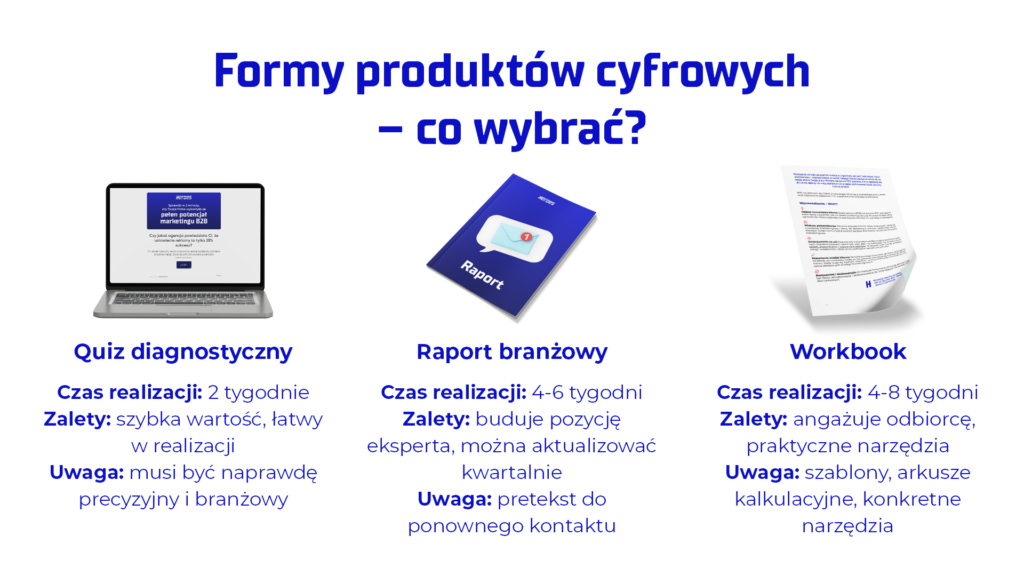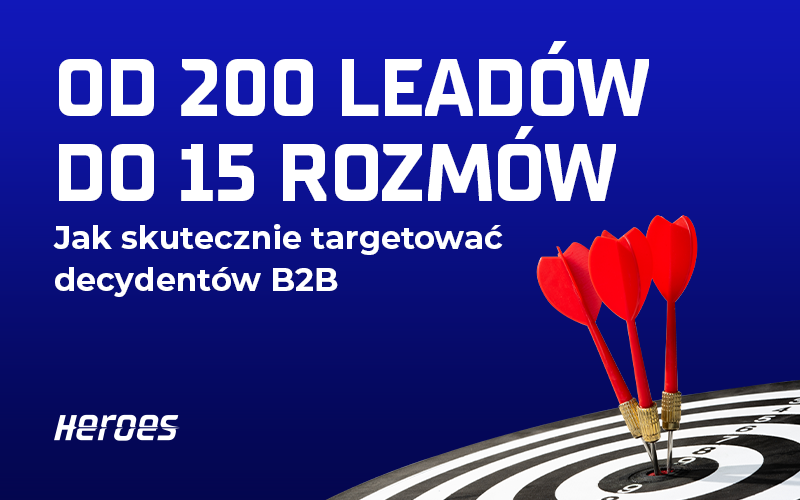Did you know that instead of fishing for 200 random leads per month, you can generate 15 conversations with exactly the people you really care about? In this article, I'll show you a proven strategy that allows you to reach directors, CEOs and other decision makers - even if "no CEO fills out a Facebook form." The problem, with
A problem that most B2B companies face
I talk to B2B companies every day and I see the same pattern. Either they flood the market with ads hoping to get lucky, or their salespeople spend hours trying to get through LinkedIn or cold emails.
There is also a third scenario - ad hoc campaigns. Suddenly it turns out that there is a shortfall to the target market, a gap in the market appears, and you need to "get the sale quickly." A campaign prepared in a week, launched, and the result? The same as always.
The sales department complains about the quality of the leads, marketing shows that the numbers match, and the bottom line is a lot of noise and few conversions.
Why doesn't the traditional approach to B2B leads work?
Most companies do just that: they take a big net and cast it into the water. What do they catch? Everything - small fish, seaweed, sometimes a shoe. And we need to catch a specific fish.
Experienced angler:
- He knows exactly what kind of fish he wants to catch
- He knows its habits and what kind of bait it likes
- Knows where and when to fish
And that's exactly how you need to approach acquiring high-value leads.
Case Study #1: Training company - from chaos to precision
We worked with a company that implements a proprietary methodology for optimizing production processes. Great product, but a problem reaching the right people.
Challenge:
- Target group: production and finance directors in High Mix Low Volume companies
- Activities to date: campaigns on LinkedIn and Facebook
- The result: a mass of leads that don't meet the criteria, wasting salespeople's time
Solution:
We created a digital product with a deliberately long, "marketing ugly" title:
"Optimizing Production Costs in HiMix Low Volume Companies - A Guide for the Production Director".
Why did such a title work?
- Pre-filter: unless someone is a production director at HiMix Low Volume, they probably won't even click on the ad
- Precise targeting: immediately defines the recipient
- Quality over quantity: fewer clicks, but only from the right people
Case Study #2: Paid lead magnet - a strategy that seems crazy
The second case is a company wanting to reach out to logistics directors at large transportation companies. We did something that may seem crazy at first glance.
We created a paid digital product for £79
Result:
- Number of leads dropped from 200 to 15 per month
- But each of those 15 leads was exactly the one we wanted
- Sales revenue covered advertising costs
Why did it work?
For a professional in a high position, £79 is not a barrier. But it is enough of a filter to sift out those not really interested in the topic.
Key principle: Sometimes less is more. 15 quality leads are more than 200 casual contacts.
The process from behind the scenes: How to create an effective digital product?
Stage 1: Product preparation (1-2 months)
Let's not lie to ourselves - it takes time. But the investment pays off.
- 2-3 weeks for research: industry data collection, interviews with experts, case studies
- 2-3 weeks for writing and editing: maintaining an appropriate level of content
- 1-2 weeks for graphic design: professional form confirms value
Stage 2: Landing page as a qualification tool
A landing page is not meant to be a pretty website. It is supposed to be a tool for qualifying leads.
What it must include:
- Precise definition of the target group
- "This report is for CFOs of manufacturing companies with revenues of more than £50 million per year."
- A well-chosen form (3-4 fields)
- Always add the field "position" - this is your first quality filter
- You can add the size of the company if that's an important criterion
- Specific value in the title
- Avoid generalities like "how to live better" or "how to sell more"

The most common mistakes you need to avoid
❌ Too broad a target
"This is for anyone who is interested in process optimization" - DOES NOT WORK. The narrower the target group in communication, the better.
❌ Not enough specialized content
If you're targeting a CFO, he needs to find something in the first 3 minutes that he doesn't already know.
❌ No follow-up
The digital product itself is the beginning, not the end. You need to have the entire contact path planned.
Three pillars of a successful B2B lead strategy
1. targeting by value
Your content itself must select the audience. If everyone wants to download your material, it's probably too generic.
2. process more important than tools
You can use a variety of platforms, but a thoughtful path from initial contact to sale is key.
3. long-term thinking
One good digital product can work for you for months, generating quality leads.
Practical checklist: How to know if your lead magnet will be effective?
✅ The title includes a specific position/industry?
✅ The content provides expert-level knowledge?
✅ The form has a "position" field?
✅ The target group is precisely defined?
✅ Do you have a follow-up scheduled?
✅ Content solves a specific business problem?
Key findings
Remember: Sometimes it's better to spend a month preparing a great digital product than a year optimizing poorly performing campaigns.
Generating high-profile B2B leads is not a matter of luck or big advertising budgets. It's a matter of strategy, precision and patience in building valuable tools.
Key rules to remember:
- Quality always beats quantity
- Precise targeting > wide coverage
- Valuable content = natural filter of leads
- A paid lead magnet can be more effective than a free one
FAQ
Q: Doesn't a paid lead magnet scare away potential customers? A: Not if you are targeting decision makers. For a director or CEO, £79 is not a barrier, but an effective quality filter.
Q: How long does it take to create a successful digital product? A: A minimum of 1-2 months for quality research, writing and graphic design. There are no shortcuts to quality.
Q: How often can leads who have downloaded the material be contacted? A: Follow-up should be planned in advance. Start after 2-3 weeks, then every 2-4 weeks with valuable content.
Q: Does this strategy work in every B2B industry? A: Yes, but it requires customization. A deep understanding of the problems and language of your target audience is key.
Q: How many leads per month can I expect? A: With a well-configured campaign, 10-30 high-quality leads per month is realistic, depending on the size of the market.
Need help generating valuable leads?
If you want to move from casual contacts to conversations with real decision makers, learn about our service "Mission: New Customers"..
We combine marketing with sales, because we know that setting up advertising is only 25% of success. We will help you create a complete lead generation system - from digital product to landing page to follow-up automation.
Make an appointment for a free strategy consultation → KLIK.
About the author: Lukasz Wisniewski is CEO of Heroes agency, which specializes in B2B lead generation. He has conducted more than 750 sales calls and helped dozens of companies optimize their customer acquisition processes. He hosts the podcast "Mission Marketing" and trains companies on how to combine marketing with sales.

